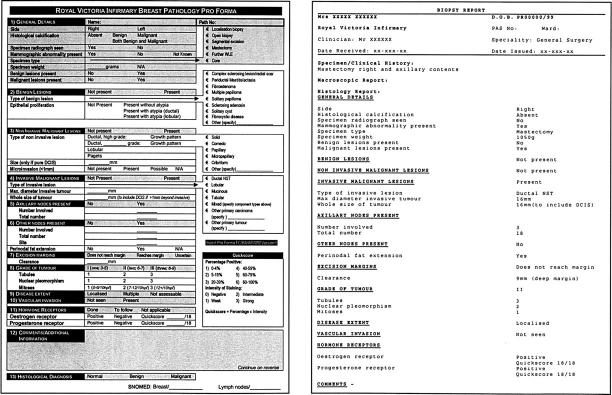Abstract
Aim—To determine whether the introduction of a standard reporting proforma has led to an improvement in the completeness of histopathology reports for breast cancer excision specimens.
Methods—A standard reporting proforma was designed using the Royal College of Pathologists' minimum dataset for breast cancer histopathology reports and the national histopathology reporting form of the National Health Service (NHS) breast screening programme. This was introduced into our department in June 1999, with reports generated from the proforma replacing the standard text reports. The pathological information contained in 50 text reports issued before the introduction of the proforma and 50 reports generated using the proforma was compared with the minimum dataset and NHS breast screening programme guidelines.
Results—A general improvement in documentation of individual pathological features was noted after introduction of the proforma. This was most significant in relation to documentation of features, such as microcalcification and ductal carcinoma in situ. In addition, important features such as tumour grade, tumour size, and hormone receptor status were documented more frequently in the proforma group. There was an overall increase in the number of reports regarded as complete after introduction of the proforma.
Conclusions—The introduction of a standard proforma led to a significant improvement in the completeness of breast cancer histopathology reports in this centre, but continued vigilance is needed to ensure that standards continue to improve.
Key Words: breast • proforma • histopathology • minimum dataset
Full Text
The Full Text of this article is available as a PDF (214.9 KB).
Figure 1 The standard breast pathology proforma used in Newcastle and a sample report generated using this method.



